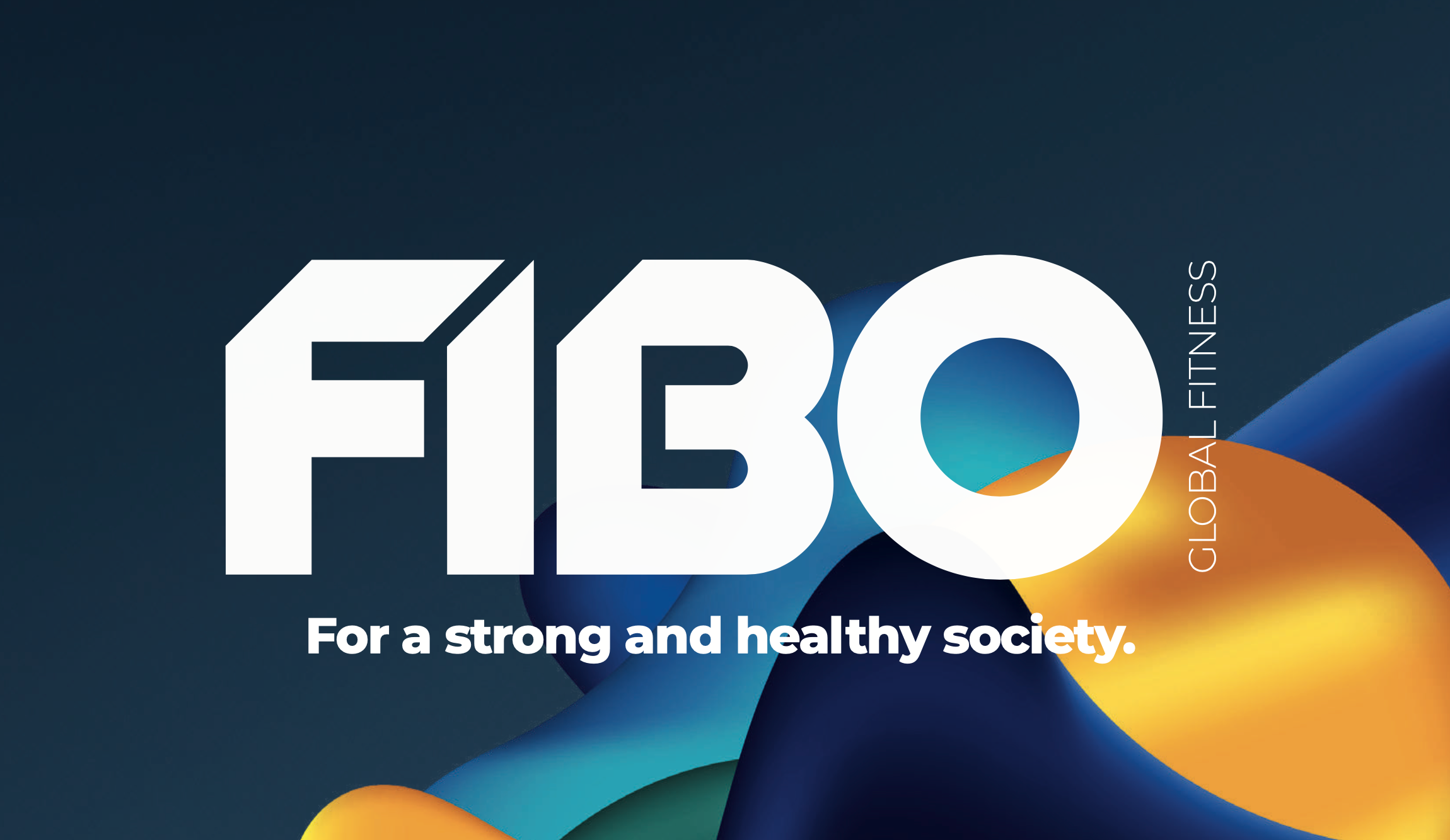FIBO 2025 – the world’s largest fitness trade show – offered a comprehensive snapshot of the fitness industry’s future.
The 40th edition of this Cologne-based event (April 10–13, 2025) drew a record crowd of over 150,000 attendees from 129 countries.
Across 13 bustling halls, more than 1200+ fitness brands showcased innovations ranging from high-tech equipment and digital health solutions to new wellness experiences.
Industry leaders, experts, and enthusiasts came together to exchange ideas, highlighting several key themes and conversations.
Of course, Virtuagym was present at FIBO 2025 — not just at our booth, but across the entire expo.
Our trendwatchers hit the floor to explore emerging innovations, connect with industry leaders, and get a front-row view of where fitness is heading. 🔎
EHFF 2025: Key Figures, Visionary Voices & The Real Future of Fitness
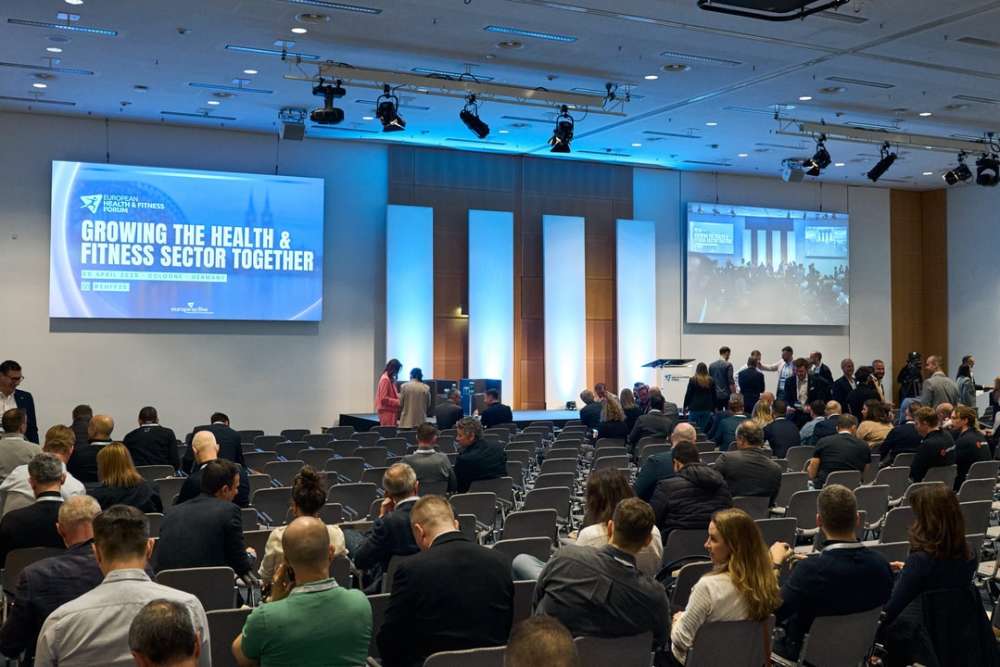
On April 10th, more than 600 leading minds from across the European health and fitness sector gathered at the Congress Centrum Nord in Cologne for the European Health & Fitness Forum (EHFF).
Naturally, Virtuagym was right there in the middle of it all.
This year’s theme – “Growing the health and fitness industry together” – couldn’t be more relevant.
In a time where rising prices, political tension, and regulatory shifts are shaking things up, the call for unity isn’t just inspiring. It’s essential.
Because let’s be honest: If we want to keep growing as an industry, we need to stop competing on price and start building better systems – together.
Fitness Market 2025: The Numbers Don’t Lie
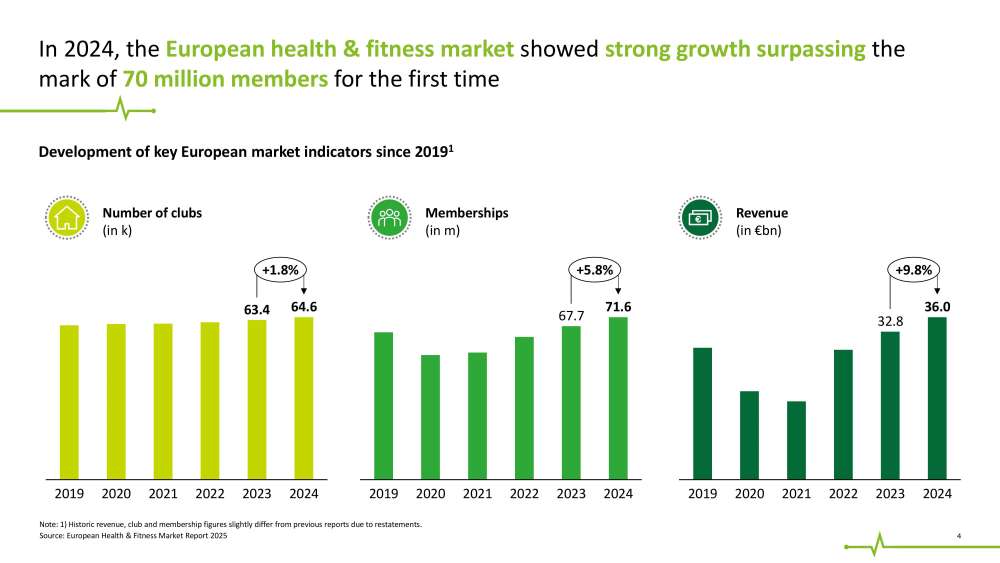
Europe’s fitness industry is stronger than ever – and it shows. The mood at FIBO 2025? Unmistakably optimistic. Backed not just by big ideas, but by hard data.
A brand-new industry report released at FIBO by EuropeActive and Deloitte confirmed what we’ve all been feeling:
The European fitness market has fully bounced back – and then some.
Here’s what the numbers are telling us:
- 📈 64,600 fitness clubs across Europe in 2024 (+1.8% vs 2023)
- 💪 71.6 million health club memberships (+5.8%) – a record high
- 💰 €36 billion in revenue (~$39.8B) – up nearly 10% from last year
- 🚀 Top 20 operators grew by 13% collectively
Herman Rutgers, co-author of the report, noted they are “confident to reach EuropeActive’s ambition of getting to 100 million members… by 2030.”
Several factors are driving this growth.
- Nearly 4 million new members joined a health club last year
- Clubs across Europe raised their prices
- Major European gym chains expanded across the continent, and the top 20 operators grew 13% collectively.
FIBO 2025: Where Fitness, Tech & Experience Collide

At FIBO 2025, one topic dominated both the conversations on stage and the buzz on the expo floor: technology.
More specifically, the fact that the fitness industry is still playing catch-up when it comes to digitalization – and that we’re running out of time to fix that.
While the rest of the world has been integrating digital tools into every aspect of life, many fitness clubs are still relying on outdated systems, fragmented apps, and disconnected member experiences.
But now that Gen Z is entering the market in full force, the urgency is growing.
This generation is mobile-first, tech-native, and expects seamless, personalized experiences in everything they do – including fitness.
From access control to communication, to training, biomechanics, and body composition – everything has to work together in one place.
In other words, real digitalization means rethinking the entire client journey, not just bolting on a bit of tech here and there.
Walking through the expo halls, this shift was hard to miss. The dedicated Digital & Tech Zone was bigger and bolder than ever, with companies showcasing everything from AI-driven training apps to smart strength machines that correct your form in real time.
For the first time, there was even a full hall dedicated to fitness software – and yes, Virtuagym was there, showing how we’re helping clubs create a fully connected coaching experience. 🧡
It’s becoming clear that the real winners in the fitness industry will be those who embrace data, personalization, and system-wide integration. Not because it’s trendy, but because it’s what the modern fitness consumer expects.
People want to understand their bodies, track their progress, and receive coaching that evolves with them – not generic programs or one-size-fits-all advice.
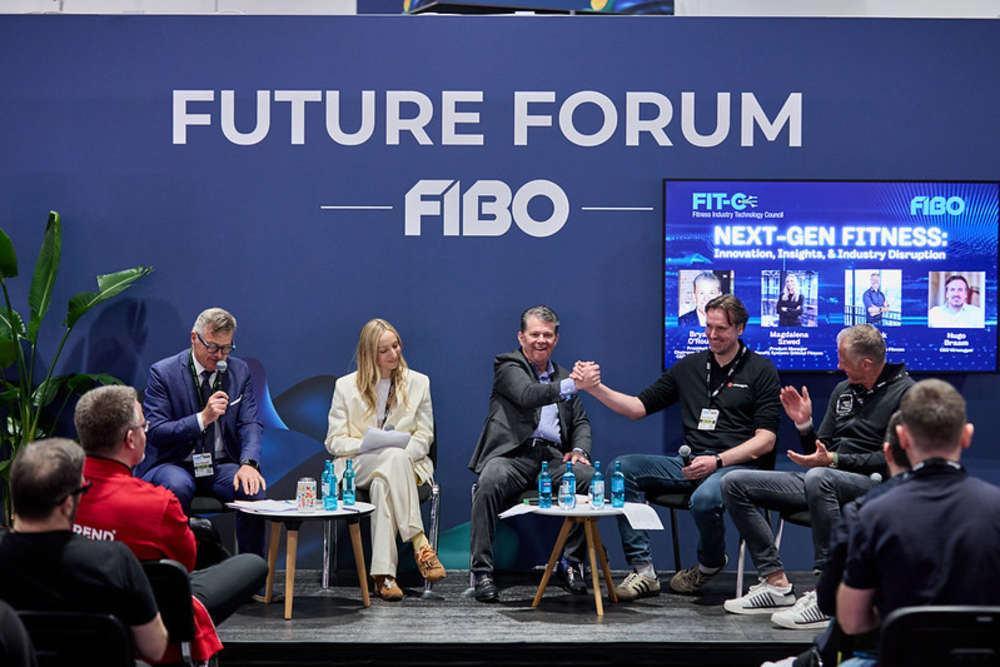
“In professional sports, strategy was once based purely on a coach’s instinct. Today, it’s heat maps, data models, and AI-driven analysis. The coach hasn’t disappeared—he’s evolved. He’s now the connector, the motivator, the culture builder. And that’s exactly where the fitness industry is heading: the trainer remains, but tech takes the guesswork out. AI doesn’t replace humans—it empowers them.” ** ** – Hugo Braam, CEO Virtuagym.
Two years ago, Virtuagym launched its first AI coach for consumers. Now, at FIBO 2025, it unveiled its AI Workout Builder for trainers.
In just 30 seconds, a customized 3-day training plan is created – individually adapted to, for example, knee injuries, fitness level, equipment, and age. Personalization is no longer a luxury, but a standard that everyone can afford.
Gen Z and the Rise of Boutique Expectations
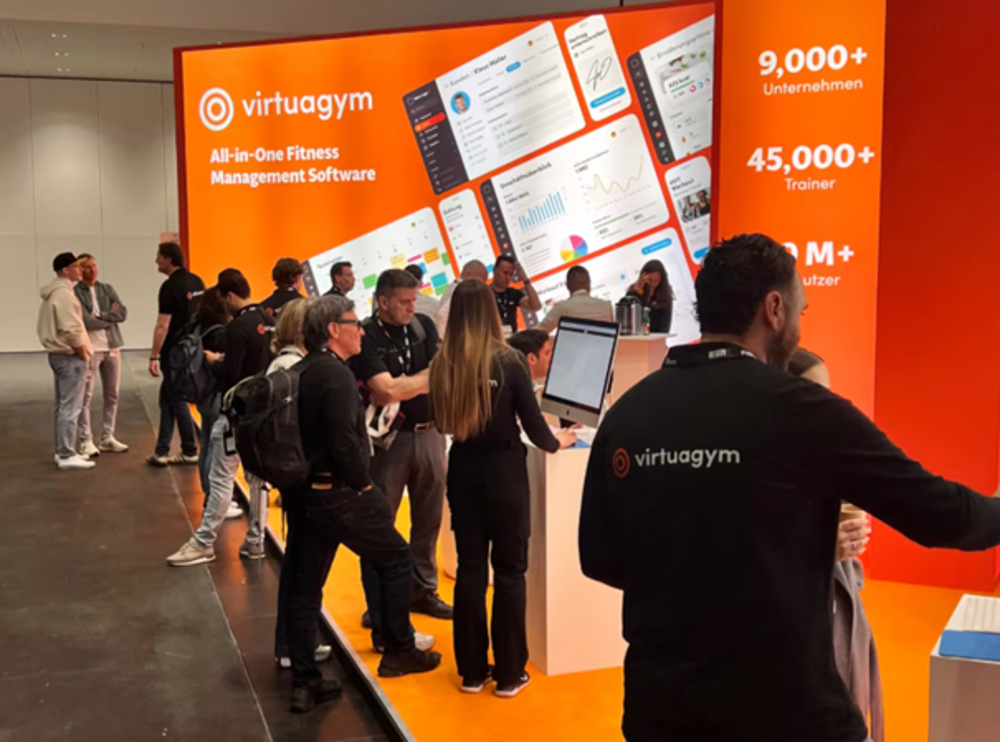
As digital tools continue to evolve, one group in particular is raising the bar: Gen Z.
This generation has grown up with technology at their fingertips. They don’t just expect convenience – they demand it.
From seamless app navigation to instant responses and frictionless sign-ups, waiting is not part of their vocabulary.
For fitness operators, this means rethinking more than just your tech stack. It’s about creating mobile-first ecosystems that integrate every step of the member journey – from onboarding and communication to personalized coaching, performance tracking, and beyond.
On-demand content alone won’t cut it. The entire experience needs to feel fluid, fast, and fully tailored.
Today’s consumers want services built around their unique goals, schedules, and preferences.
Yes, tech can support this – but true loyalty still comes from the human touch. No algorithm can replace genuine personal attention.
One major opportunity? Onboarding.
Onboarding is still heavily underestimated in our industry. A solid digital onboarding experience – with clear goals, guided steps, and smart needs analysis – sets the tone for everything that follows.
And especially in boutique and high-end environments, this can make or break a member’s experience.
In short: to win over the next generation of members, you need to think like them.
Fast, frictionless, flexible – and above all, personal.
The Rise of Personalization as a Business Model
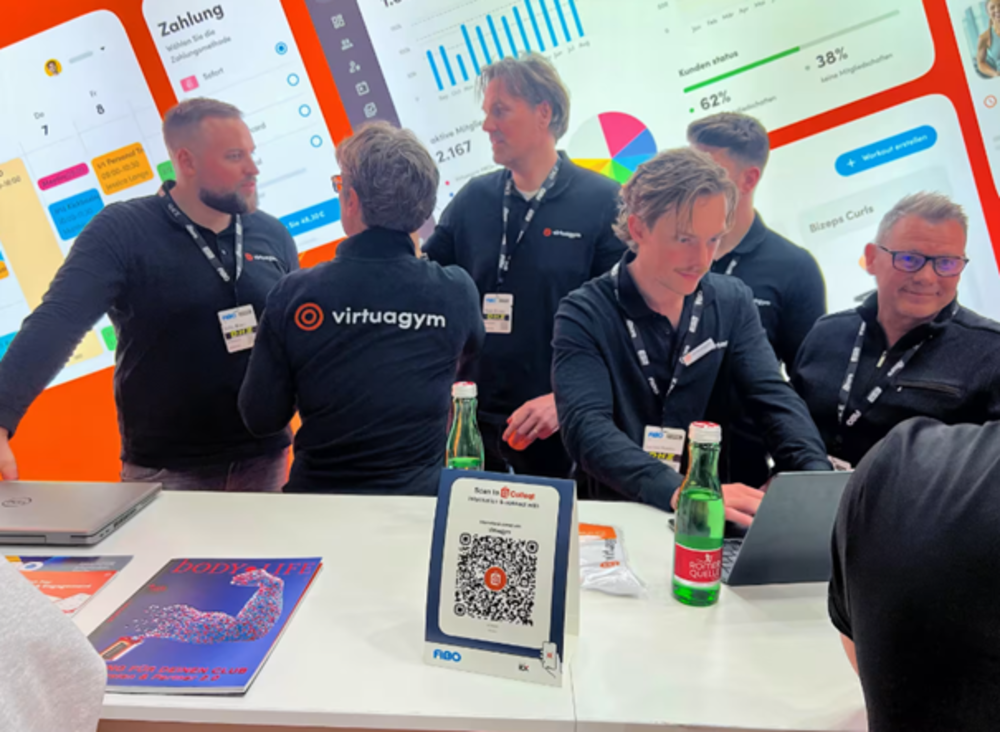
Another hot topic at FIBO – especially behind the scenes in executive discussions – was the rise of boutique fitness and the shift toward premium, experience-driven training.
Yes, low-cost gyms still dominate in terms of market share. But the vibe is changing.
In continental Europe, we’re seeing a clear cultural shift: more and more people are willing to pay more for a space that feels personal, inspiring, and tailored to their needs.
Think: HIIT studios, cycling boutiques, yoga and Pilates concepts, cross-training boxes – each with their own unique community, aesthetic, and sense of belonging.
Boutique studios don’t just sell workouts. They sell identity.
They create tribes, not target groups.
And that hits home especially with younger generations like Gen Z, who value authenticity, connection, and storytelling above mass-market scale.
These studios typically offer smaller group sizes, expert-level coaching, and a strong brand experience – from interior design to member communication to the playlist in class. It’s not just fitness. It’s a feeling. And people are buying into that.
Meanwhile, traditional gyms are starting to adapt. Many are adding HIIT zones, functional areas, and even boutique-style group classes under their existing roof.
Not just to keep up, but to stay relevant in a market that’s demanding more variety, more depth, and more connection.
It’s a shift from volume to value.
From access to experience.
And that shift is only accelerating. 🚀
HYROX, Hybrid Athletes & The Rise of Fitness as Community
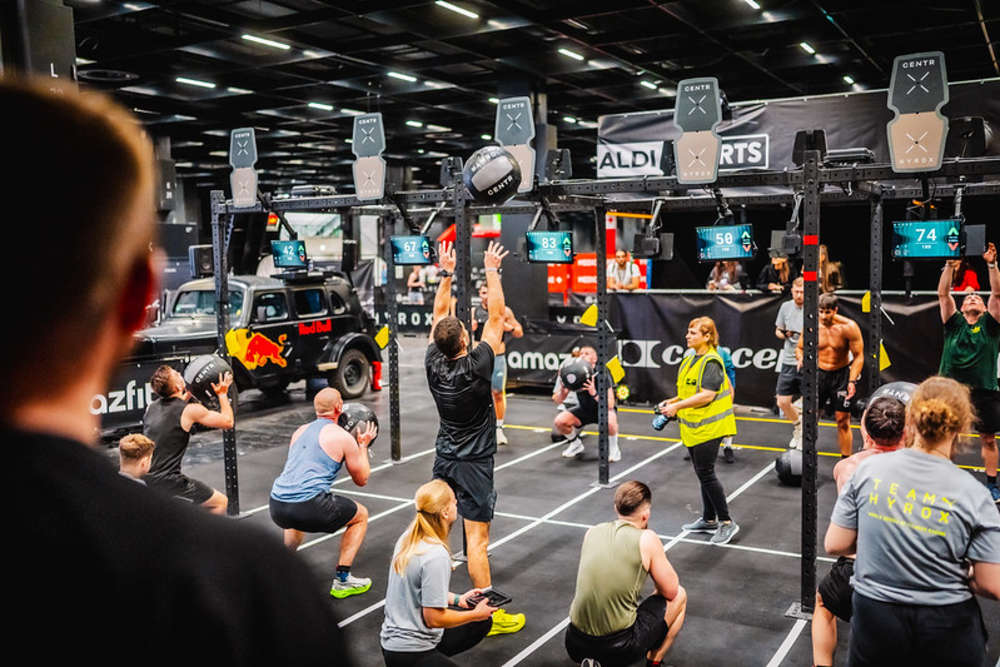
One standout moment at FIBO 2025? The live HYROX race! A movement in motion.
HYROX and similar formats show how fitness is evolving: it’s no longer just about lifting or running, but pushing limits together and building community.
The “hybrid athlete” – blending strength, endurance, and functionality – was everywhere. But beyond the training itself, it was all about connection. 🧡
Gyms aren’t just service providers anymore – they’re social hubs. Events, challenges, and digital leaderboards are driving engagement.
This is the future: not just workouts, but digital dopamine. And while tech is key, it’s the human energy that makes it powerful.
Wellness, Recovery & Longevity: From Luxury to Lifestyle

FIBO 2025 made one thing clear: wellness is no longer niche – it’s the new foundation of fitness.
For the first time, an entire hall was dedicated to wellness, recovery, Pilates, and longevity – not just as extras, but as essentials.
The message? Fitness is about feeling better, longer – physically, mentally, emotionally.
As the population ages and younger generations demand more holistic health, longevity is becoming central to the fitness journey.
The next big shift isn’t more reps – it’s better living. And it’s already happening.
What Do We Take With Us – And What’s Next?

The impressions from FIBO 2025 are still settling… but one thing’s for sure: we’re taking home a lot more than branded tote bags and protein bar samples.
The future of fitness is hybrid — and members expect it.
Physical, digital, and on-demand are no longer separate worlds. Today’s members move fluidly between in-gym sessions, app-based workouts, challenges, and live events.
Operators must build connected ecosystems that deliver seamless, personalized experiences across all touchpoints.
Technology is rising — but the human coach remains irreplaceable.
AI, data, and smart equipment are revolutionizing how we train. But it’s the coach who brings emotion, context, and connection.
The best results come from combining tech-powered structure with human-powered motivation.
Wellness, recovery & longevity are reshaping the industry.
Sleep, mental health, recovery tools, functional training and holistic health are moving from the sidelines to the spotlight.
With entire halls dedicated to wellness and longevity, it’s clear: fitness is evolving from workouts to total wellbeing.
Community is the new retention strategy.
Fitness isn’t just about sets and reps — it’s about belonging. HYROX races, group training, digital challenges and gamification show how the industry is shifting toward connection-first experiences that keep members coming back.
And that’s exactly where we’re heading at Virtuagym.
Every day, we build tools that help fitness professionals grow, adapt, and lead. Whether you run a high-end boutique studio, a national gym chain, or a hybrid healthcare concept – we help you plan smarter, connect deeper, and run your business more efficiently.
Because in this new era of fitness, it’s not just about stronger bodies.
It’s about stronger ecosystems. And we’re proud to help build them!
The next FIBO will take place in Cologne from April 16 - 19, 2026.
FIBO 2024 Recap & Highlights

From April 11–14, FIBO 2024 in Cologne brought together over 1,000 exhibitors and nearly 130,000 visitors from 114 countries — proving once again that the fitness industry is alive, evolving, and more relevant than ever.
Here are the top 5 trends we spotted in 2024 on the floor:
1. Holistic health is booming
Recovery, mental wellbeing, and lifestyle products were everywhere. Think: ice baths, spa tech, skincare, and wellness apps. Fitness is no longer just about training — it’s about living better, longer.
2. AI is the real game changer
From predictive diagnostics to personalized coaching tools, AI is taking fitness beyond tracking — it’s helping shape long-term health strategies.
3. Gamification makes training stick
Interactive, feedback-driven workouts are trending — especially among Gen Z and older adults. Training is becoming more fun, goal-oriented, and accessible thanks to game-like tech.
4. Digital tools ease staff shortages
With the right tech, members train independently while trainers monitor progress remotely. The result? Better use of time, more meaningful interactions, and improved retention.
5. Smart diagnostics are the new norm
Forget the bathroom scale — full-body health assessments are becoming standard. They support smarter programming and create new revenue models for gyms and studios.
FIBO 2023 Recap & Highlights
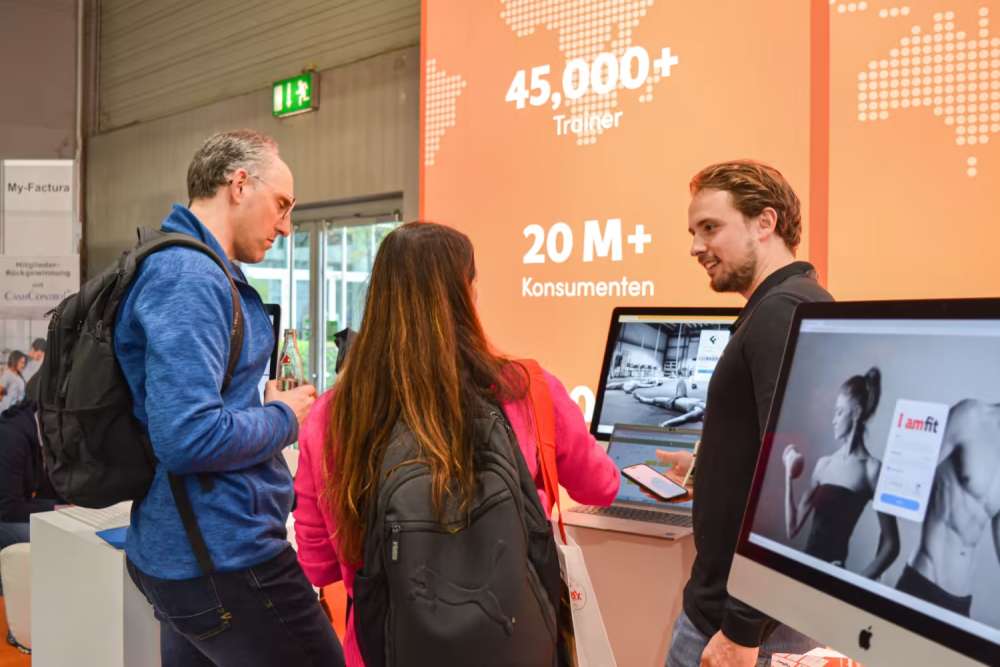
FIBO 2023 once again proved to be the global hotspot for fitness, health, and innovation. With 867 exhibitors and over 106,000 visitors, this year’s event focused on:
Key Themes & Highlights in 2023
1. Health & Fitness: A Growing Synergy
This year’s program showcased how fitness, health, and wellness are becoming increasingly integrated.
With nearly 44% of fitness facilities now positioned as health-focused, there was strong emphasis on prevention, mental fitness, rehabilitation, and long-term lifestyle change.
2. Digitalization & Personalization
From AI-driven fitness assessments to smart wearables and fully digital coaching platforms – the future is personal.
Exhibitors introduced solutions that combine gamification with digital tools to enhance user engagement and track progress more effectively.
3. Gamification & Gen Z Engagement
Fitness is getting fun! Gamified workouts, interactive equipment, and even eSports collaborations (like with Borussia Mönchengladbach) are helping to connect with younger generations.
4. Innovative Equipment & Diagnostics
Companies demonstrated how biomechanics and advanced diagnostics are now accessible beyond elite sports – bringing professional tools into mainstream fitness and physical therapy.
